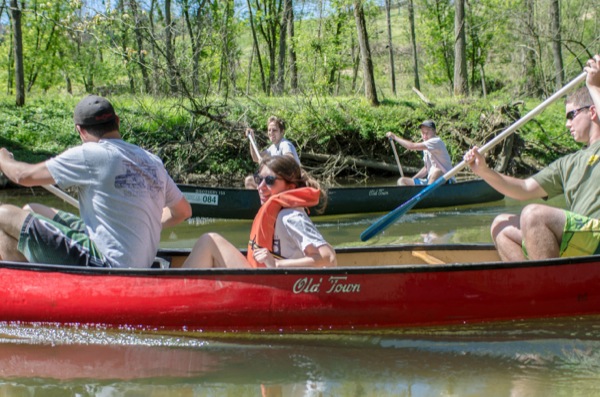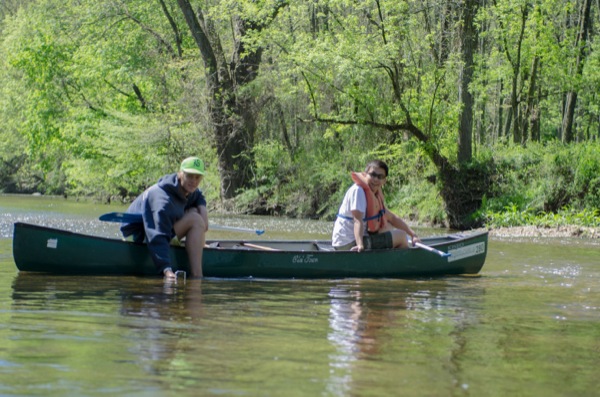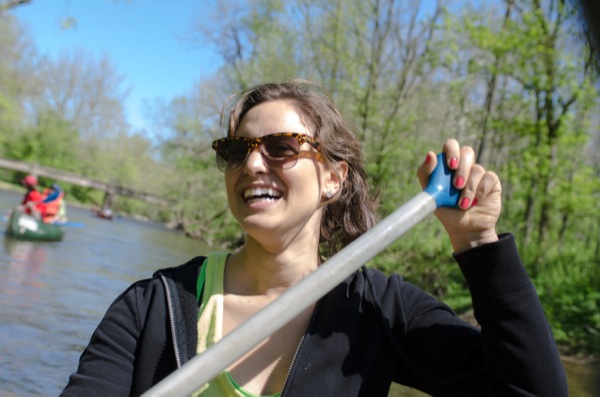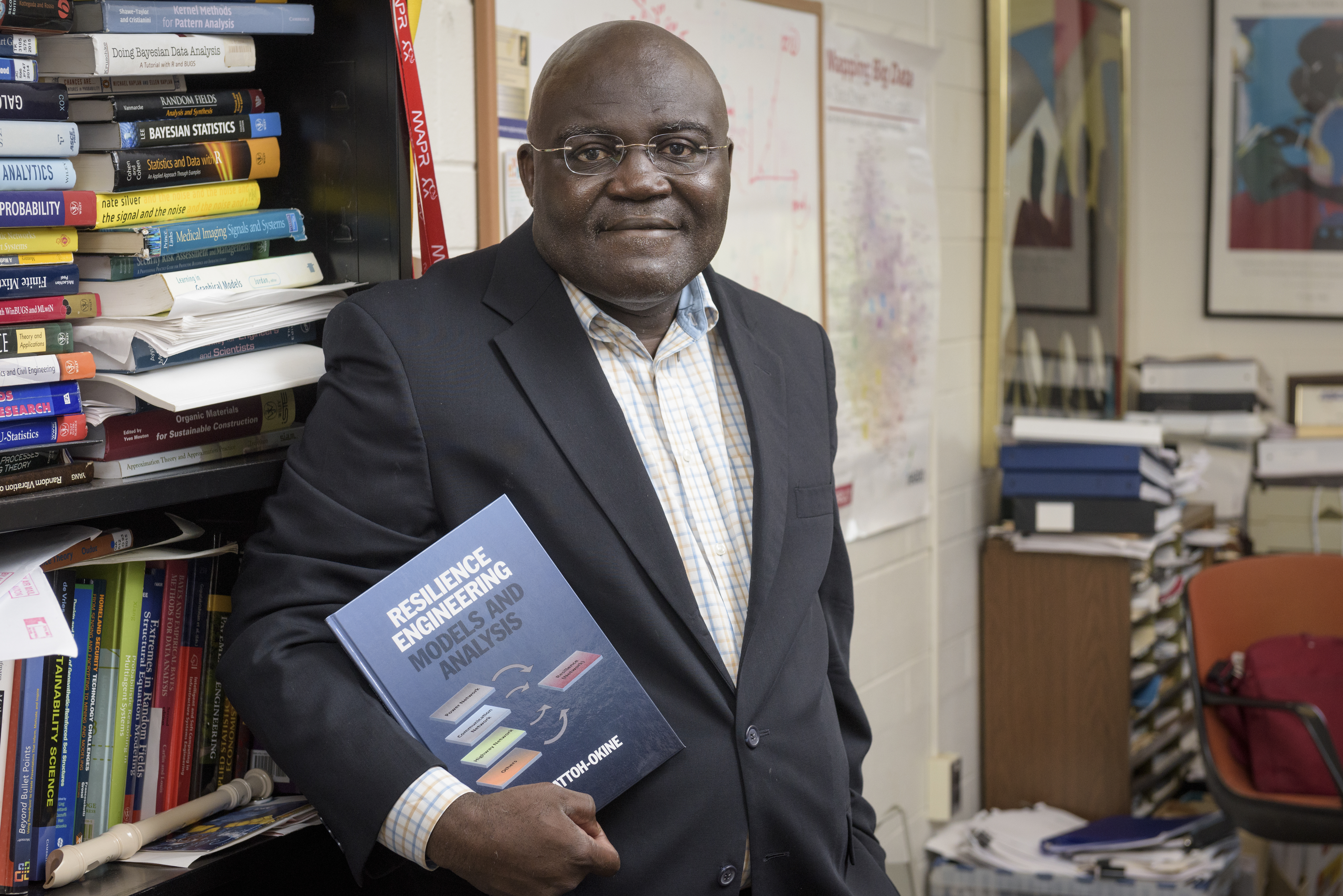

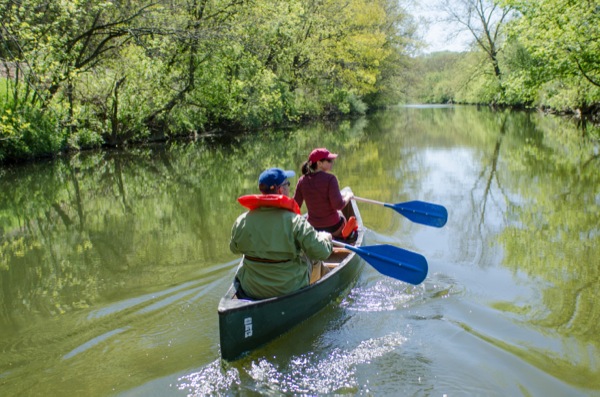
'Who's Downstream'
UD class displays project at Delaware Center for Contemporary Arts
10:13 a.m., June 5, 2013--When students in an interdisciplinary class at the University of Delaware set up a “Who’s Downstream” exhibit at the Delaware Center for the Contemporary Arts (DCCA), they wanted to show the path that stormwater takes through urban and industrial areas -- specifically how the Brandywine River flows through the city of Wilmington -- and also find out what the city’s residents know about their drinking water and how concerned they are about its quality.
The “Who’s Downstream: An Exploration of the Impact of Urban Water Runoff” project is on display as part of the imPERFECT City exhibit at the DCCA, with a reception scheduled Saturday, June 8.
People Stories
'Resilience Engineering'
Reviresco June run
The UD class is led by Jules Bruck, associate professor in the Department of Plant and Soil Sciences, Jon Cox, assistant professor in UD’s Department of Art, and Anthony Middlebrooks, associate professor in the School of Public Policy and Administration. It engages students in several real-world projects as a way of learning design processes and enhancing innovation.
Cox explained that the class began the project by visiting the Brandywine Conservancy and got information as to the health of the Brandywine River, which is the source of Wilmington’s drinking water. It was there that they realized that a lot of the pollutants found in the river were occurring upstream from Wilmington but that the city was spending money to rid its drinking water of those pollutants.
The exhibit is part video and part display, as a large wall map uses different water samples to show how the quality of water varies at different parts of the river, getting progressively worse as it flows toward the city.
"Students worked in small teams to create different aspects of the exhibit,” said Bruck. “It was a significant project because the results of their efforts are on display for well over a month at DCCA. I consistently find that class projects with real-world results motivate students to higher levels of achievement."
For the video portion, Cox said, “The students went and interviewed some residents in Wilmington. They basically just took a walk in Brandywine Park, going up and down and talking to some of the different local residents and getting ideas of how people are using the Brandywine. They have some shots of people fishing, some shots of people walking around, kids playing in the river.
“They also asked people if they knew where their water came from. And some of them said, ‘No. I hope it doesn’t come from there,’” as they pointed to the river.
The video also includes an aerial shot of the Brandywine taken by attaching a camera to a suction cup on the bottom of a small airplane.
In addition to the exhibit, the students are encouraging people to make a difference in the community. “Students are asking the public to take some sort of action and pledge to use less fertilizer, use less water, plant a tree, or sign our petition to pass legislation to help keep the Brandywine clean,” said Cox.
Kyle Gordon, a senior landscape horticulture major with a concentration in landscape design, said that he did not know that the Brandywine was the main source of drinking water for Wilmington before working on the project. He said he learned a lot about runoff because of the project, especially that “when we dump loads of fertilizer on our landscapes, it typically doesn’t have a chance to penetrate the soils. It gets collected in the rain water and that washes into our streams and causes eutrophication problems that can kill off wildlife.”
Gordon said his favorite part of the project was “finding out a lot of information about our source of water because I think that really has a big impact on people’s psyche when you hear what goes into our water and how it is adversely affecting it.”
Christine Stallone, a senior in the College of Arts and Sciences who worked as the project manager, said it was a great experience. “Working with the DCCA was a really wonderful opportunity but alongside that, it’s a huge responsibility knowing that student work is going to be exhibited in a space that is usually held for professional artists and other members like that.”
Stallone added she enjoyed working on a project that would benefit local communities. “I think working with the Brandywine and working in Wilmington, we’re able to help tie this back to our local environment and to recognize what we can do and what we should be doing as a way of education as well as execution in this task, and that’s what we were trying to acknowledge throughout this exhibition.”
For more information about the imPERFECT city exhibit, visit the DCCA website.
To view the video that the class made for the project, click here.
Article by Adam Thomas




